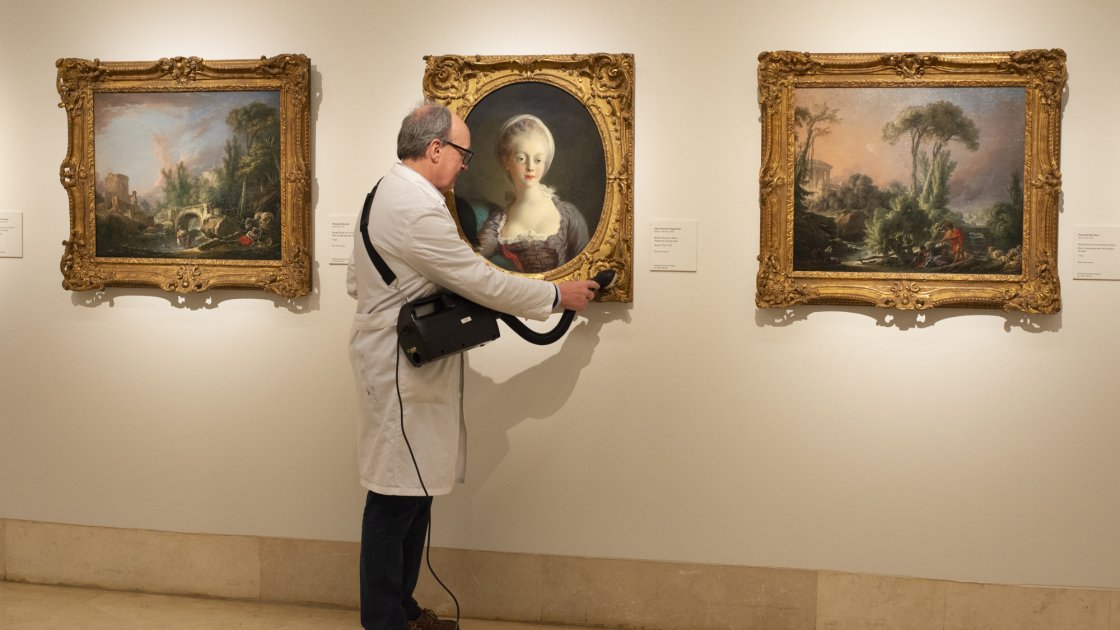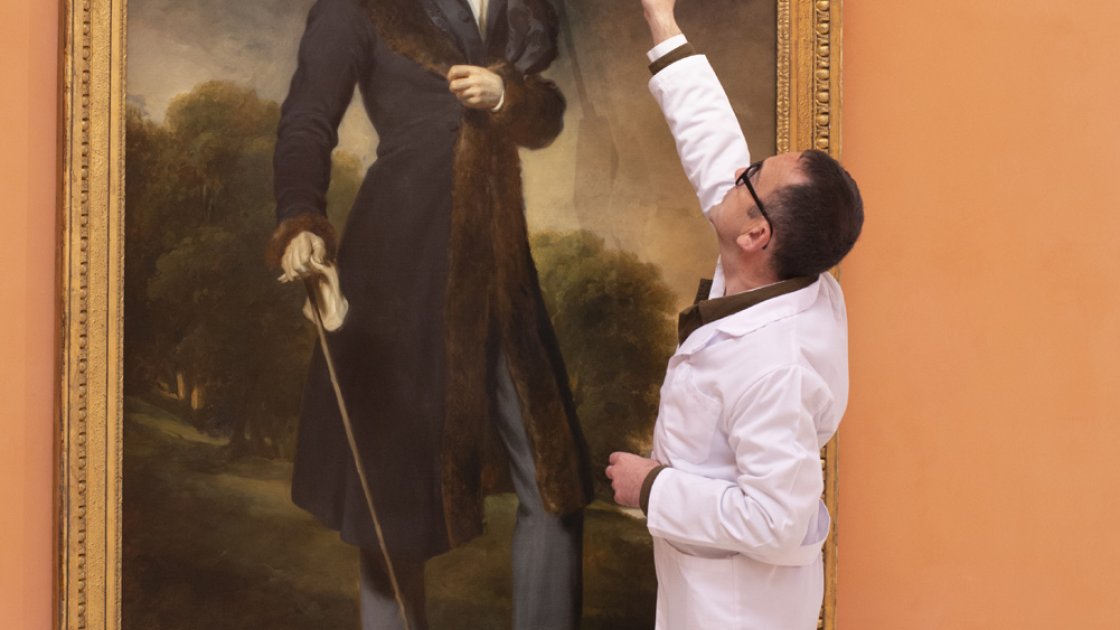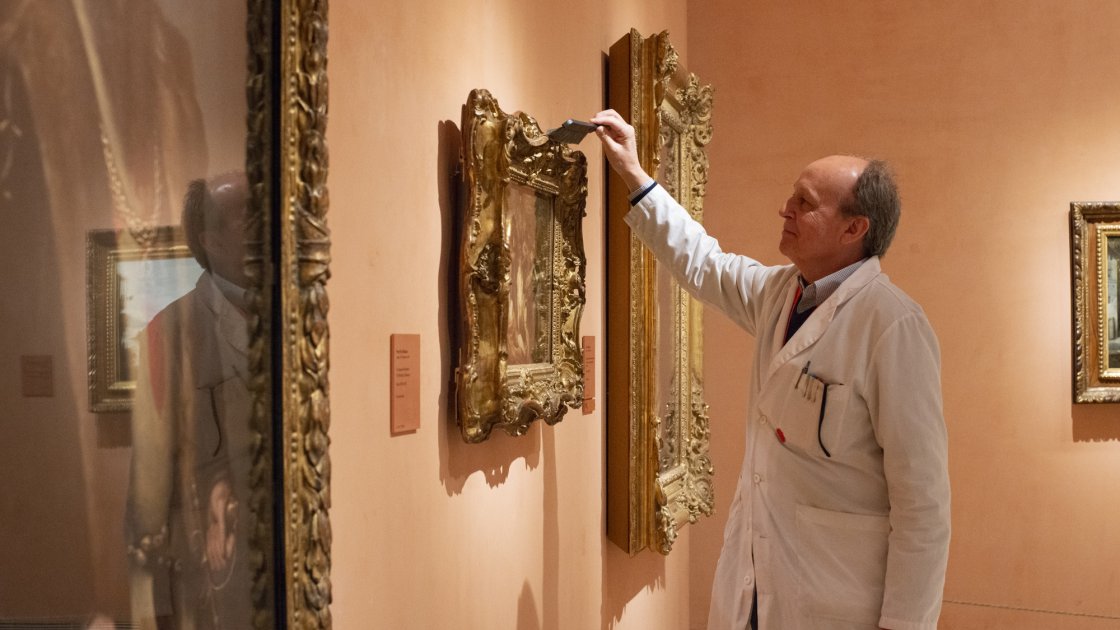Preventive Conservation
The restoration department is responsible for the conservation of the works housed in the museum. The purpose of preventive conservation is to adopt possible measures and actions designed to prevent or minimise any damage that may affect the heritage in our care.
In the field of preventive conservation, the museum's restoration department provides advice on lighting and environmental conditions in order to adapt them to the conservation needs of each object and ensure that the works are preserved in the best possible conditions.
Likewise, it collaborates with other departments to create display systems both for the works and pieces in the permanent collections and for those loaned for temporary exhibitions. It also advises on the necessary transport conditions.
Its duties include periodic inspections and maintenance of the works belonging to the collections in the museum's galleries, whether they are on permanent display or loaned by other institutions and temporarily on show in the MNTB's galleries, in order to meet the requirements previously agreed on with the lenders and set out in the loan contract.
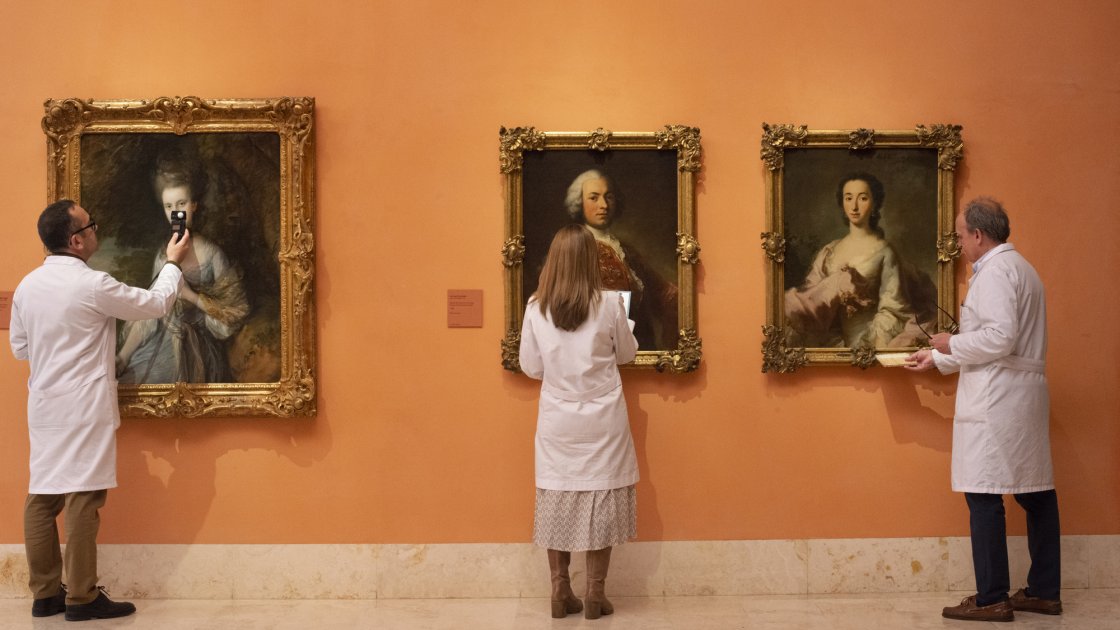
To control and monitor the aforementioned collections, reports on the condition of each artwork are drawn up and updated. Travel reports are also prepared, which are the documents that accompany each of these works during transportation in order to comply with the institution's loan commitments.
For some time now, there has been a great deal of activity concerning the loan of works of art between institutions for temporary exhibitions. This involves removing objects from their usual environment and subjecting them to more or less extensive displacements. Couriers play a very important role here, as they are responsible for supervising their handling, packaging and transport, as well as their placement or hanging in the exhibition venue, ensuring that the agreed protection, security and environmental conditions are met, in accordance with preventive conservation criteria.
The restoration department supervises the state of preservation of loaned works during the installation and dismantling of temporary exhibitions, signs the condition reports, which reflect the condition in which they arrive at the Museo Thyssen, and attempts to solve any conservation problems that may arise within the legal framework established between the lending institutions.
Preventive conservation action plan
Periodic inspections of the museum's works and maintenance of the galleries are part of preventive conservation planning.
These tasks are carried out according to a time schedule, so that all the works in the museum are examined. The same measures are applied to the works in the temporary exhibition galleries in compliance with requests previously agreed with the lenders for the duration of the exhibition.
The museum has qualified staff who carry out these gallery maintenance tasks and work methodically in accordance with the schedule drawn up for this purpose. The team is familiar with the materials of which artworks are made and the appropriate systems for ensuring their stability, as well as the care and cleaning techniques to be used for heritage assets.
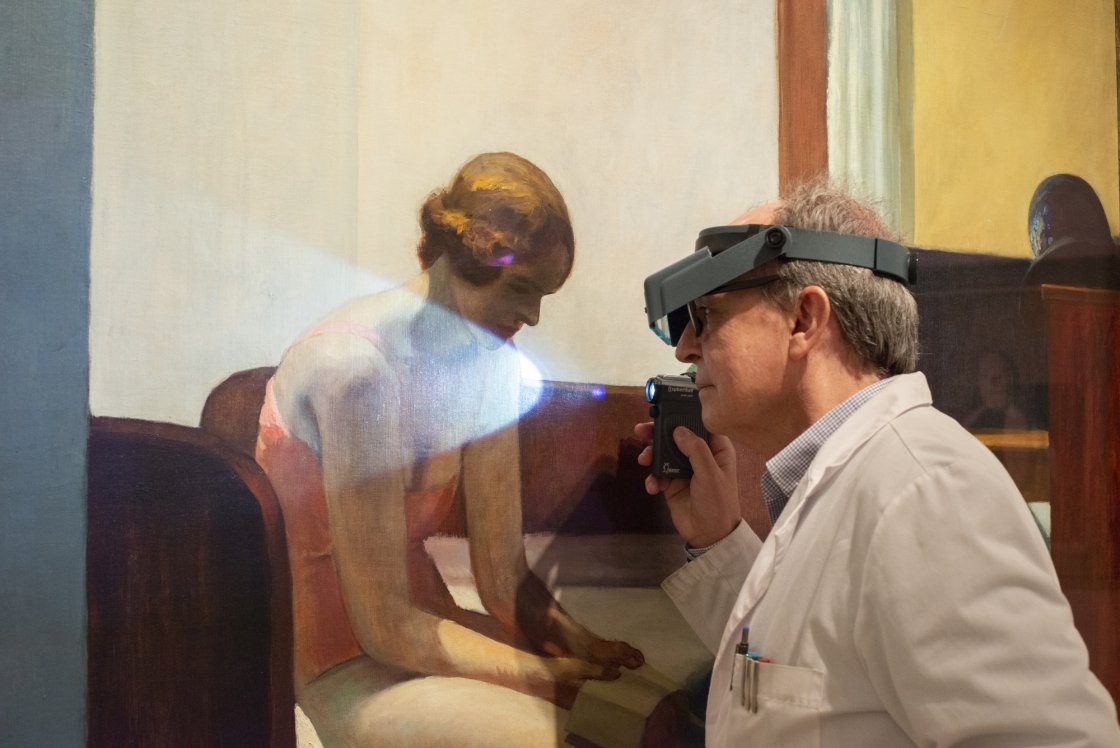
During inspections and maintenance of the galleries, they must ensure the correct condition of the works and foresee any possible incidents that could undermine or destabilise the conservation of the pieces. They are not only responsible for the works belonging to the museum’s permanent collections but also, as stated earlier, works lent for temporary exhibitions.
Action protocols and schedules are drawn up and implemented periodically depending on the circumstances of the activities progressively carried out in the museum.
The tasks include supervising each of the works and providing a maintenance and cleaning service that takes into account the characteristics and materials of the works, as well as those of the display elements. Specific materials – tested in the museum’s chemistry laboratory – are used to perform these tasks in order to ensure that the work does not interfere with or modify the characteristics of the components of each piece on display.
The aim of preventive conservation methods is to avoid or minimise possible damage and deterioration. Periodic inspection, monitoring and maintenance plans are drawn up for the works to ensure that they remain in good condition. Such problems are usually caused by external factors and agents. Other museum departments help with and are involved in this action plan, such as: maintenance, registry (movement of works) and security (gallery guards). They collaborate on the supervision and surveillance of the works and notify the restoration department of any incidents that may occur.
Protection systems
The protection of works of preventive conservation action lines
A particularly important task in preventive conservation is climatising and improving the installation of the works, fitting them with protection, installing stabilisers to regulate relative humidity, and creating climate crates. The necessary measures are taken to guarantee the correct conservation of the works inside and outside the museum during their transport and loan to other institutions.
On detecting biodeterioration agents that can damage the artworks, conservators can apply treatments to mitigate their effects. In the case of external loans, they must alert the institutions or private lenders and apply the same treatments as for the museum's own pieces, if required. They must also monitor and control these treatments to ensure their effectiveness. The museum has a space specially equipped to carry out anoxia treatments.
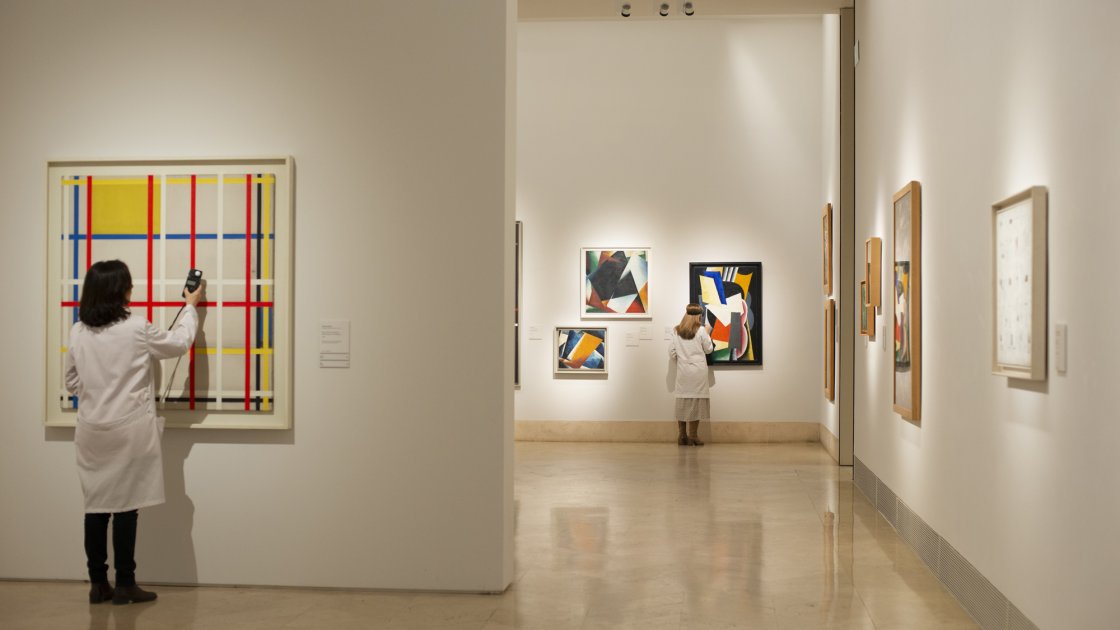
Climate crates
Protecting our works
One of the main measures employed by the restoration department to protect artworks is to create airtight climate crates.
Our procedure is fully respectful of the original frame. It uses the frame as part of the insulation system and allows the outside environment to be controlled in order to provide physical protection. The crates are built from fully reversible elements so as to preserve the integrity of the frame.
Whereas for easel paintings frames have traditionally served a dual protective and decorative purpose, for other types of art objects the classic method of protection is display cases. Climate crates, which could be described as adaptations of display cases to easel paintings, marked a major step forward in the preventive conservation of these artworks.


Climate crates were developed to isolate pieces individually and to meet the requirements of transporting artworks, addressing possible environmental variations. They are portable containers that can house all parts of the piece but can also be designed to fit inside the frame so that they are practically invisible to the public.
The front protection is constructed from anti-reflective Optium museum acrylic, which provides a clear and undistorted view of the works of art on display. Humidity regulators are fitted to the reverse to create a stable atmosphere and, finally, a rigid backing board is fitted as rear protection.
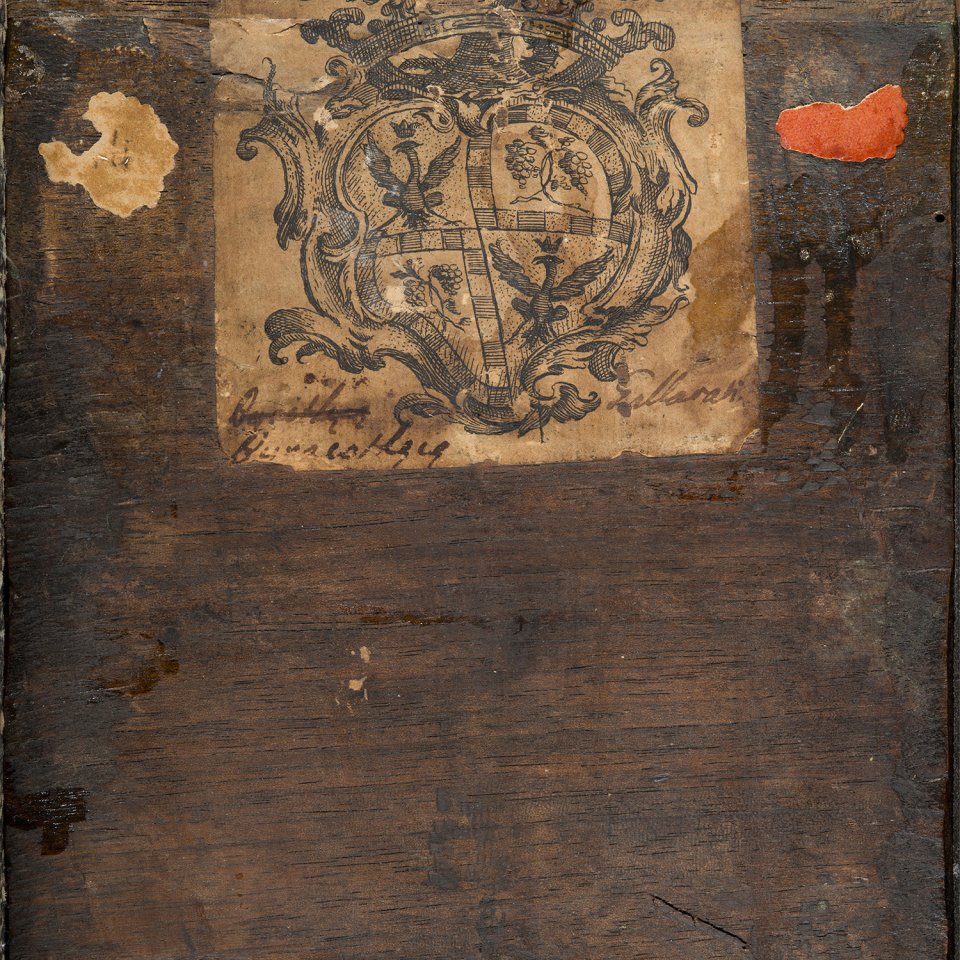
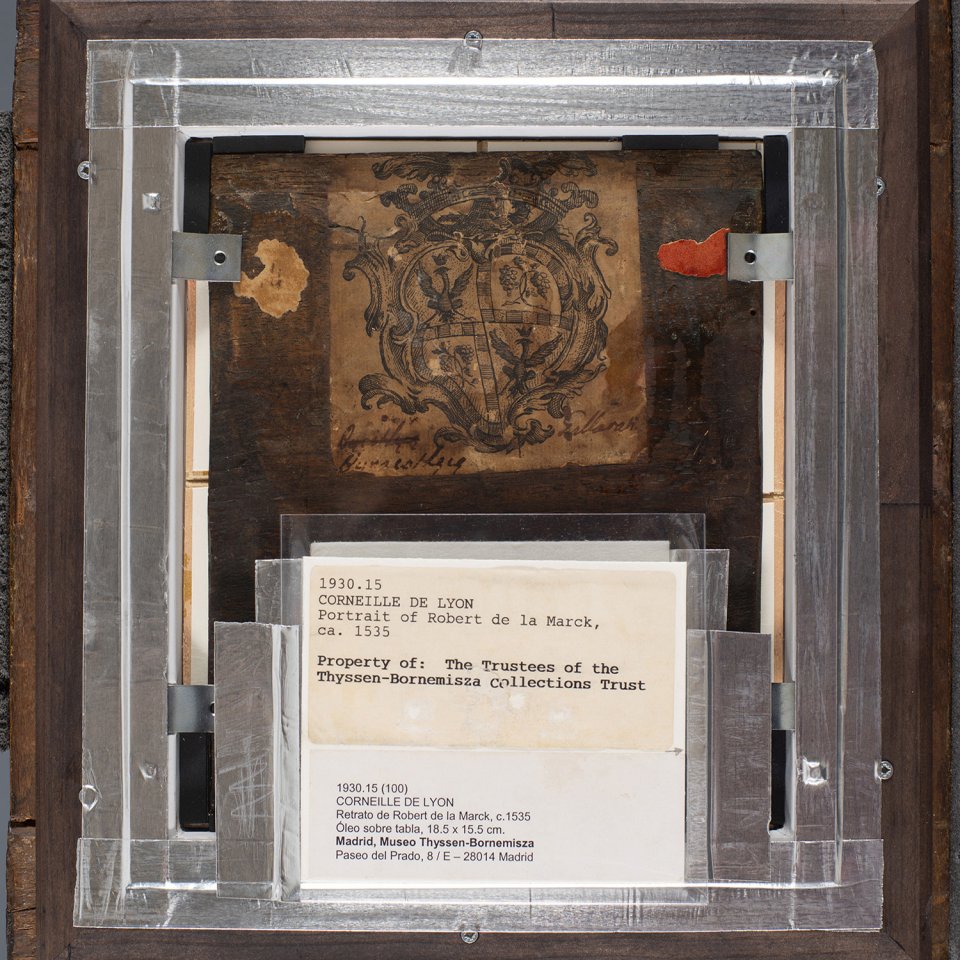
Backing boards
The secret face of artworks
The maintenance of artworks requires special care. Preventive conservation makes it possible to maintain and improve a work’s intrinsic condition by protecting its reverse side.
The reverse of a painting reveals additional information that remains hidden from the public. We often find historical documentation telling us about its successive owners or its geographical provenance – its history.
The back of a painting also provides us with information about its conservation conditions or the interventions it has undergone. The restoration department strives to shield this reverse side from environmental conditions, namely the negative effects of factors such as light, humidity, dust, dirt or incorrect handling, as well as protecting the documentation it contains.
The first measure is to correctly frame the work to help conserve it by incorporating protective anti-reflective glass to protect it from deterioration caused by external agents, while facilitating transportation and exhibition.
For this purpose, the painting is appropriately sealed and insulated to help keep the temperature and humidity conditions under control.
The back is protected to prevent possible knocks during transportation and moving, and to shield it from humidity that could be transferred from the wall where it is hung. A customised cellular polycarbonate sheet with UV protection is generally fitted. It is made up of multiple, very fine thin layers joined together by internal ribs to create a cell-like structure that lends it excellent technical properties as a thermal insulator, providing rigidity and lightness.
For historical documentation in danger of being lost, labels are encapsulated to protect them, affording them stability and permanence. Cardboard made from pH-neutral materials is used as a support.
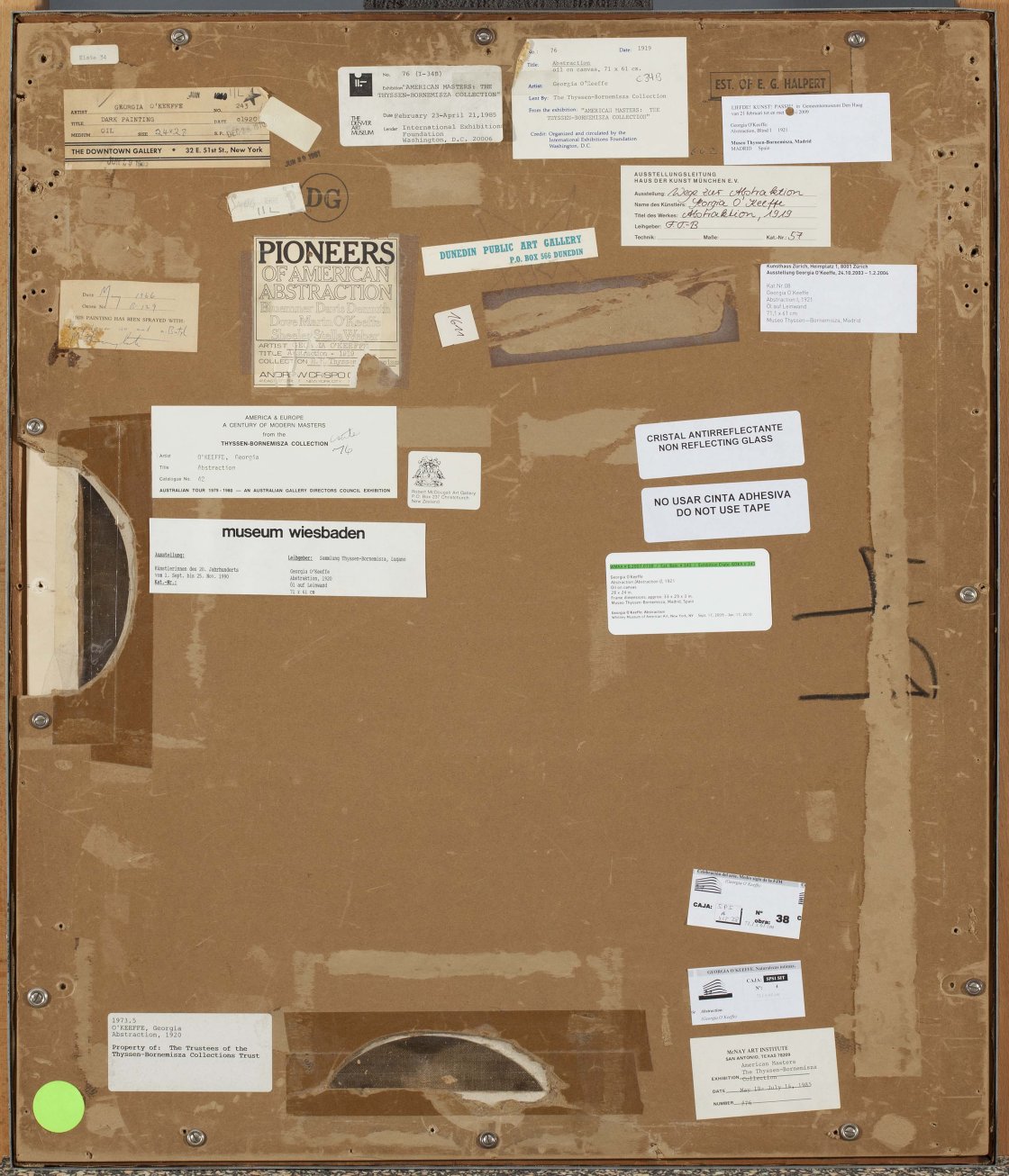

The documentary importance of backing boards and the reverse side of paintings is illustrated by this piece by Georgia O'Keeffe , who standardised the use of protective backing boards. She made them out of industrial cardboard with characteristic half-moon-shaped finger grooves. We find signatures, titles and symbols that identify the artist, such as a monogram with the initials OK inside a star, as well as labels providing essential documentary information for studying the works and their provenance. The stretchers also provide a great deal of additional data as they include annotations on authorship, titles, dates and notes about technique.
Back of O'Keeffe’s painting: Abstraction. Blind I, 1921
The importance of illumination
Light is an electromagnetic radiation essential for life that allows us to capture visual information about the world around us. In the field of art, it enables us to see the colours, textures and forms of each artwork, making it possible for us to enjoy or study them.
In the case of exhibition galleries, it is necessary to consider these aspects and, in addition, to see what is being shown with sufficient clarity. The lighting must be suitable to allow spectators to view and discover hues, textures and colours – in other words, as much surface information as possible in a sufficiently short time to satisfy the observer's curiosity without causing indifference or stress.
From the point of view of heritage, light is one of the determining factors in conservation, as it can be a source of irreversible deterioration.
Light has a direct effect on the degradation of the surfaces it illuminates and therefore on works of art. In oil painting alone, excessive lighting causes the oxidation of varnishes and drying oils, resulting in a dark yellowish tone that distorts the real colours of the work and causes the pigments to fade and become unstable. It is therefore essential to control the illumination of artworks in order to preserve them as well as possible.

Most of the artworks in museums are housed in historic buildings. This is true of the Thyssen-Bornemisza collection, which is located in the Palacio de Villahermosa, whose lighting distribution was a challenge as it had to combine natural light from balconies and skylights with artificial light to project and protect the works.
Our collection is made up of objects of different materials: paint, textiles, wood, collages, furniture, metal and glass, ceramics or leather, so the lighting must be adapted to the specific characteristics of the pieces.
The lighting specifications are based on the guidelines recommended by ICOM and adapted to our collections, so that a range of 50 lux is applied to materials with paper, textile, leather or lacquer supports, and up to 150 lux for oil paintings and other inert materials (metals and inorganic).

We also use ceiling-mounted lights on rails to project a light source with an inclination of about 30 degrees from the vertical to avoid shadows, and displaced about 45 degrees with respect to the central axis of the work to avoid reflections for those protected by glass.
The number of lamps used per work ranges from a single, intense light source to a maximum of six, depending on the size of the piece to be illuminated so as not to create breaks in intensity.
Lighting designs based on LED (Light Emitting Diode) technology are now available. These semiconductors have been used to design devices that emit a light that is clean and variable in intensity and colour temperature – ideal for illuminating artistic objects. The absence of undesirable radiation, low power consumption and almost zero heat emission make them interesting for museums.


